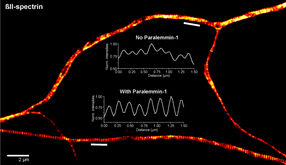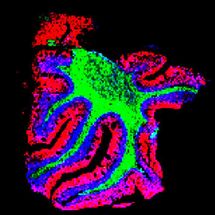Wild mice have natural protection against Lyme borreliosis
Like humans, mice can become infected with Borrelia. However, not all mice that come into contact with these bacteria contract the dreaded Lyme disease: Animals with a particular gene variant are immune to the bacteria, as scientists from the universities of Zurich and Lund demonstrate. Wild mice are the primary hosts for Borrelia, which are transmitted by ticks.
Springtime spells tick-time. Lyme borreliosis is the most common tick-borne disease in Switzerland: around 10,000 people a year become infected with the pathogen. The actual hosts for Borrelia, however, are wild mice. Like in humans, the pathogen is also transmitted by ticks in mice. Interestingly, not all mice are equally susceptible to the bacterium and individual animals are immune to the pathogen. Scientists from the universities of Zurich and Lund headed by evolutionary biologist Barbara Tschirren reveal that the difference in vulnerability among the animals is genetic in origin.
Protective gene variant
Tschirren and colleagues examined wild mice for signs of a Borrelia infection in a large-scale field study. Borrelia afzelii – the scientific name for the bacteria – feed on mouse blood. The researchers discovered that mice with a particular variant of the antigen receptor TLR2 were around three times less susceptible to Borrelia. “The immune system of mice with this receptor variant recognizes the pathogen better and can trigger an immune response more quickly to destroy the Borrelia in time,” says Tschirren. Infected mice exhibit similar symptoms to humans – especially joint complaints. Consequently, in the wild infected mice probably do not survive for very long and weakened animals soon fall victim to foxes and birds of prey.
Arms race between mice and Borrelia
The protective gene variant is advantageous for its carriers and, according to the researchers, gradually becoming prevalent in the mouse population. Nonetheless, it is unlikely that all mice will one day be resistant to Borrelia. “The increasing resistance in the host is bound to lead to adaptations in Borrelia,” predicts Tschirren. “We can observe the evolutionary adaptation through the rearmament in mice and the pathogen.”
People also have the antigen receptor TLR2, but not the resistant gene variant observed in mice. Whether the evolutionary arms race between mice and Borrelia will have repercussions for people remains to be seen. According to Tschirren, the bacterium does not necessarily have to become more aggressive for humans.
Original publication
Most read news
Original publication
Barbara Tschirren, Martin Andersson, Kristin Scherman, Helena Westerdahl, Peer R. E. Mittl, and Lars Råberg. Polymorphisms at the innate immune receptor TLR2 are associated with Borrelia infection in a wild rodent population. Proceedings of the Royal Society B, 20130364. April 3 , 2013.
Organizations
Other news from the department science

Get the life science industry in your inbox
By submitting this form you agree that LUMITOS AG will send you the newsletter(s) selected above by email. Your data will not be passed on to third parties. Your data will be stored and processed in accordance with our data protection regulations. LUMITOS may contact you by email for the purpose of advertising or market and opinion surveys. You can revoke your consent at any time without giving reasons to LUMITOS AG, Ernst-Augustin-Str. 2, 12489 Berlin, Germany or by e-mail at revoke@lumitos.com with effect for the future. In addition, each email contains a link to unsubscribe from the corresponding newsletter.






















































